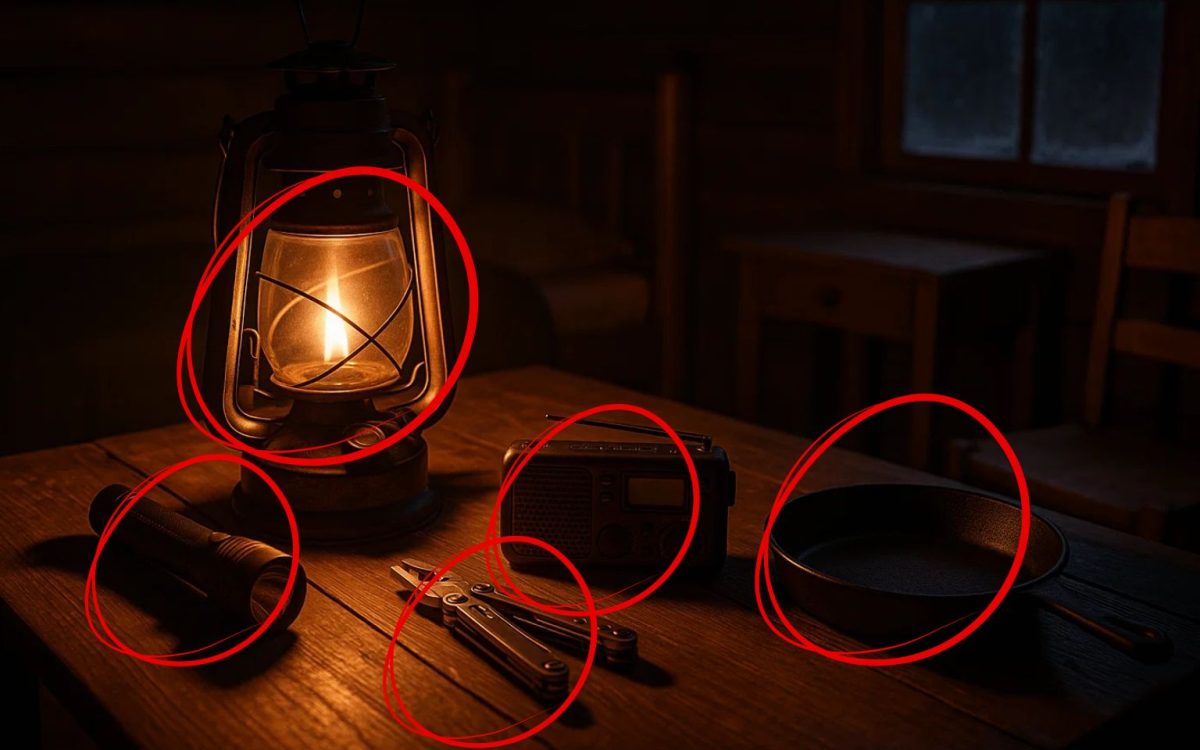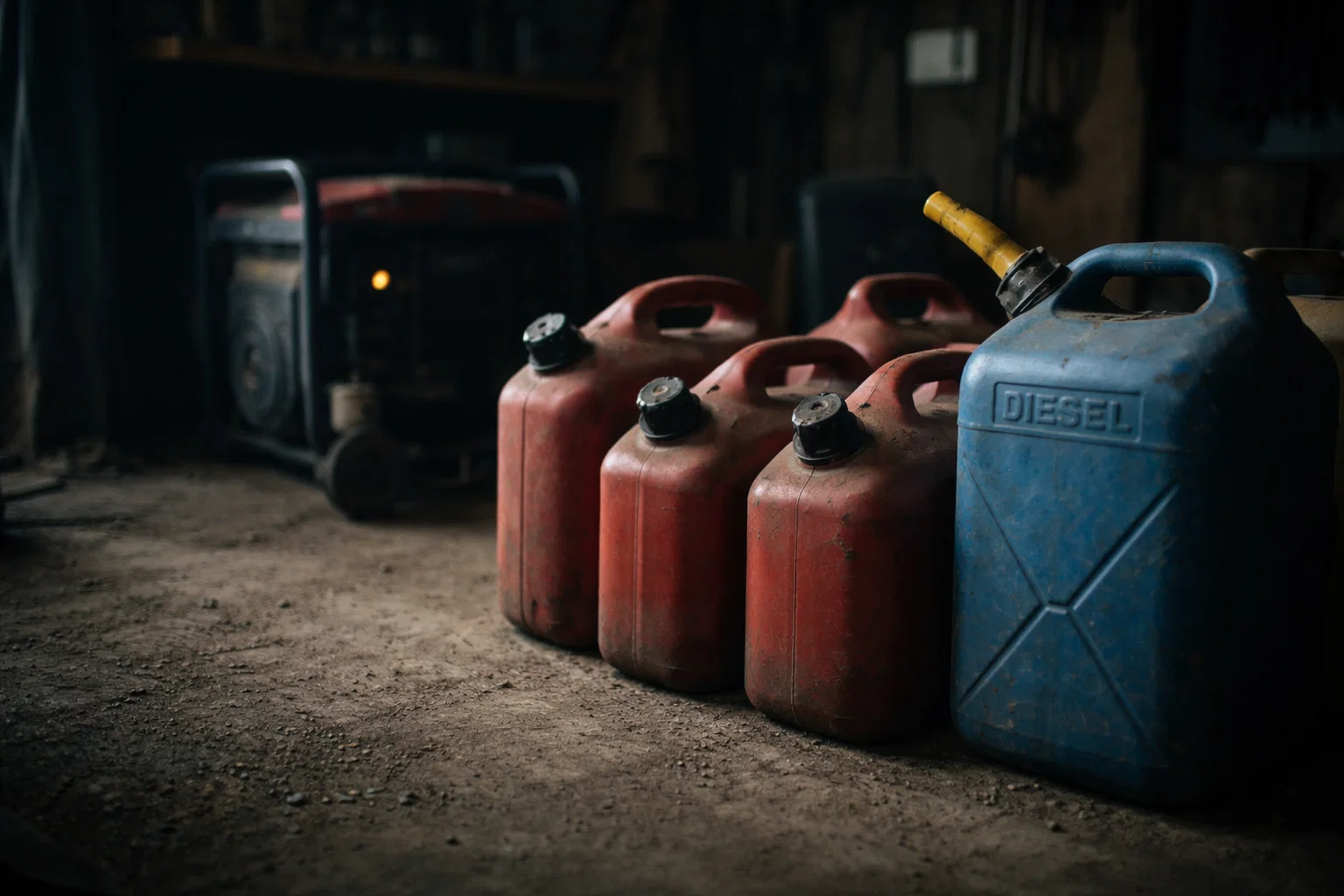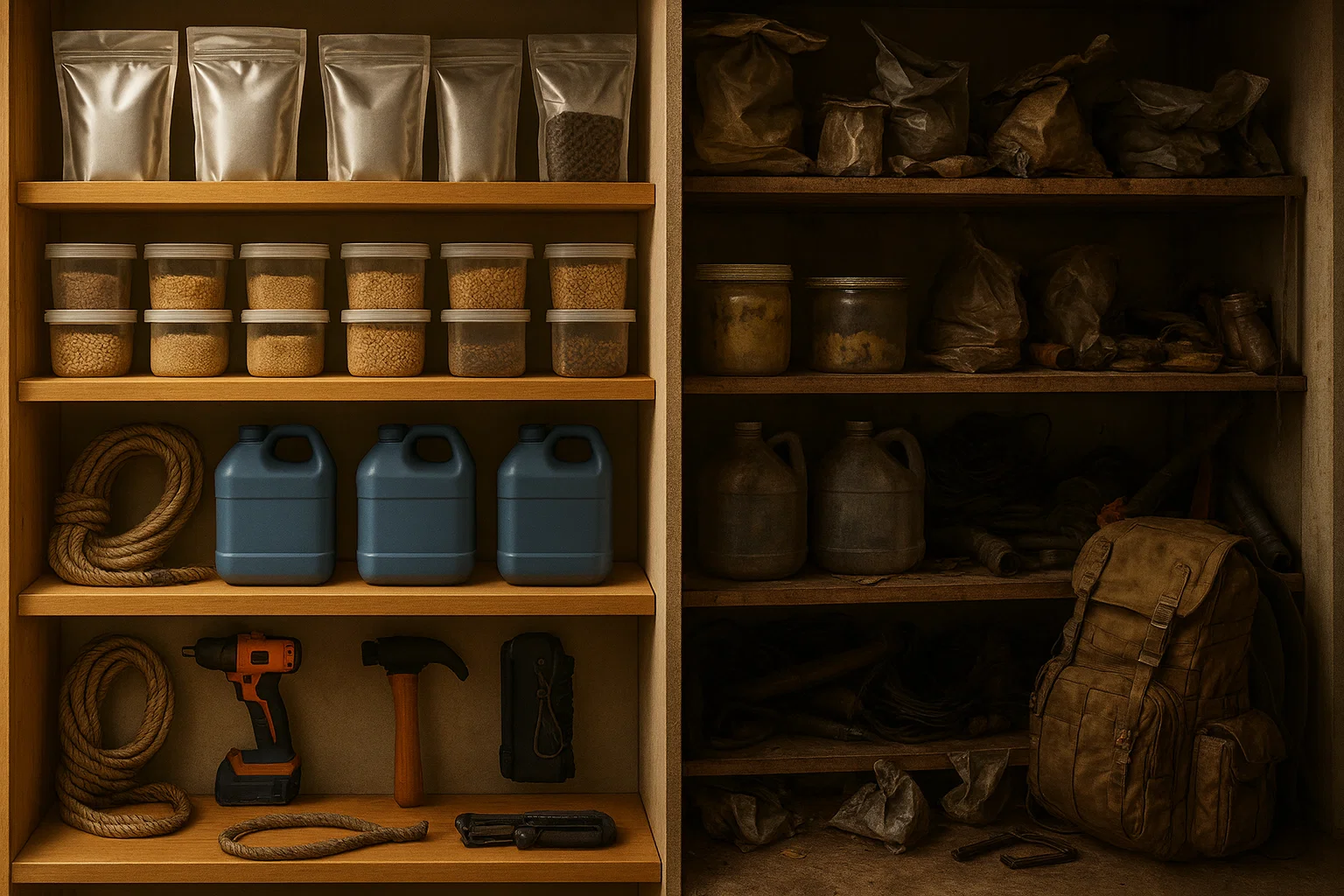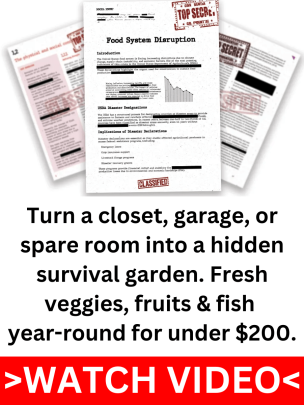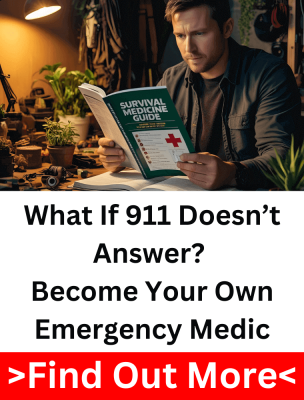Power outages aren’t rare. Many U.S. homes lose power at least once a year, and extreme weather is making them longer and more frequent.
Most people think they’re prepared, but that illusion fades fast when the power cuts. The flashlight batteries are dead, the phone dies within hours, and that electric stove everyone depends on is just a cold box.
Real preparedness means keeping simple, reliable tools that never fail. Here are 11 of them, proven to work when everything else stops.
1. Crank or Solar Lantern
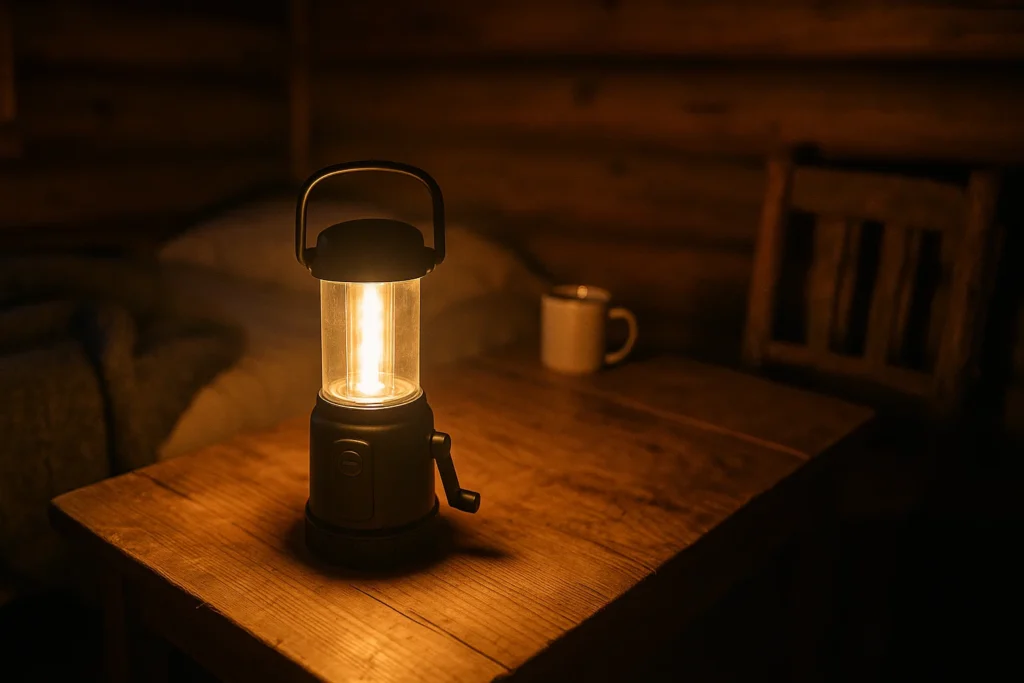
A blackout shows fast who’s prepared and who isn’t. When the lights go out, a good lantern changes everything, you can see, move around safely, and keep the house calm.
Crank lanterns are as reliable as it gets. A quick turn of the handle and you’ve got hours of light. Solar lanterns take advantage of the daylight, charging quietly while you go about your day. When night falls, they’re ready to go, no batteries, no stress.
Many models now come with USB ports that can charge your phone or radio, which is a big plus during longer outages.
Keep at least one in each main room, or near your sleeping area. The first time the power fails, you’ll be glad it’s there.
2. Headlamp with Rechargeable Batteries

Try changing a fuse, cooking dinner, or patching a pipe in the dark with one hand. It’s almost impossible. That’s when a good headlamp earns its place in your gear.
A headlamp gives you light exactly where you’re looking and leaves both hands free to work. Whether you’re walking through the yard at night or checking on your generator, it’s one of the most practical blackout tools you can own.
Rechargeable models are the best choice, plug them in after every use, and you’ll always be ready. Still, it doesn’t hurt to keep a spare set of batteries or a small power bank nearby.
One good headlamp per person is ideal. It’s simple, reliable, and once you use it, you’ll never go back to holding a flashlight in your teeth.
3. Heavy-Duty Flashlight
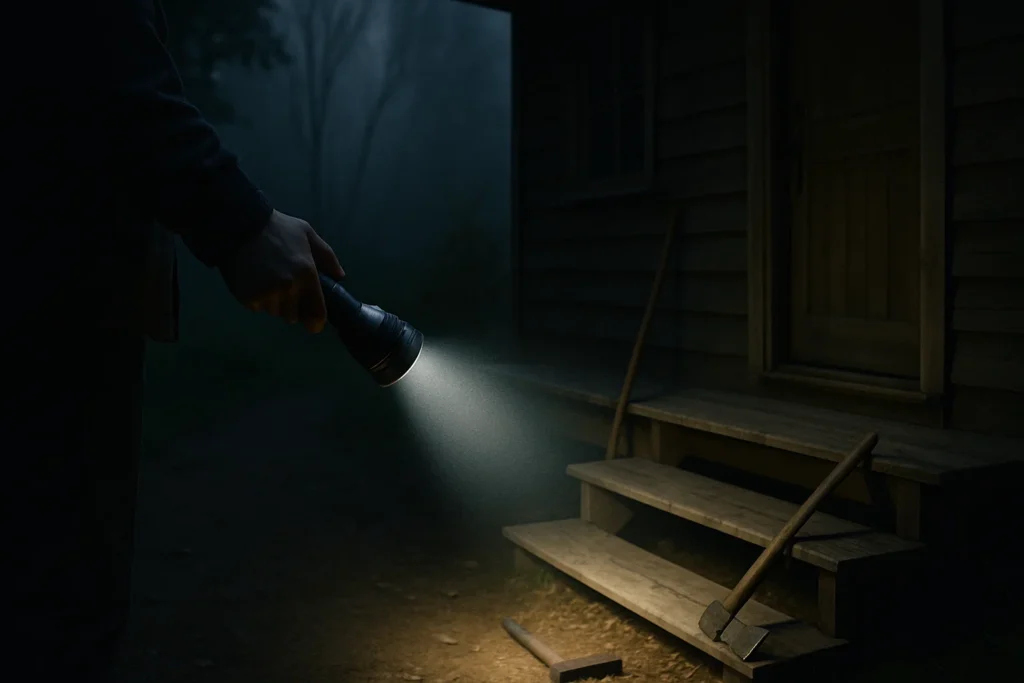
When you need to step outside during a blackout, a flashlight beats every other light source. It cuts through the dark, helps you check the yard, or find the breaker box without tripping over something.
Pick one built to last, aluminum body, waterproof seals, and a solid beam that reaches farther than a cheap plastic light ever could. You don’t want to worry about dropping it or getting caught in the rain.
Stick with models that use common batteries like AA, AAA, or 18650s. They’re easy to swap and easy to stock.
Keep one in every main room and one in your go-bag. It’s a simple habit that pays off every time the power goes out.
4. Portable Power Bank or Solar Generator
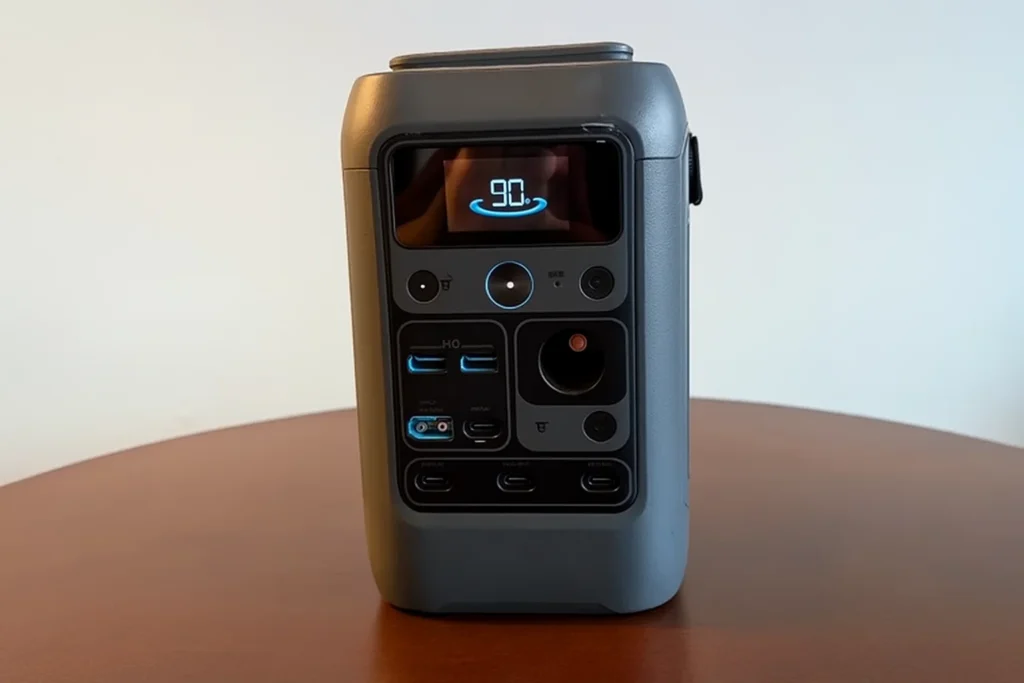
It’s easy to forget how much we rely on power until the phone dies or the radio goes quiet. In a blackout, communication can be just as important as food and water, and a power bank keeps your small devices alive when outlets stop working.
Small power banks are perfect for short outages, they’ll recharge your phone or flashlight several times and fit right in a drawer or backpack. For longer situations, a solar generator is the way to go. It can run lights, fans, even a small fridge if needed, and it recharges itself during the day.
Keep it simple: charge your power banks monthly and make sure the solar panels are clean and working. A quick test now saves you a lot of stress later.
5. Shortwave or Crank Emergency Radio
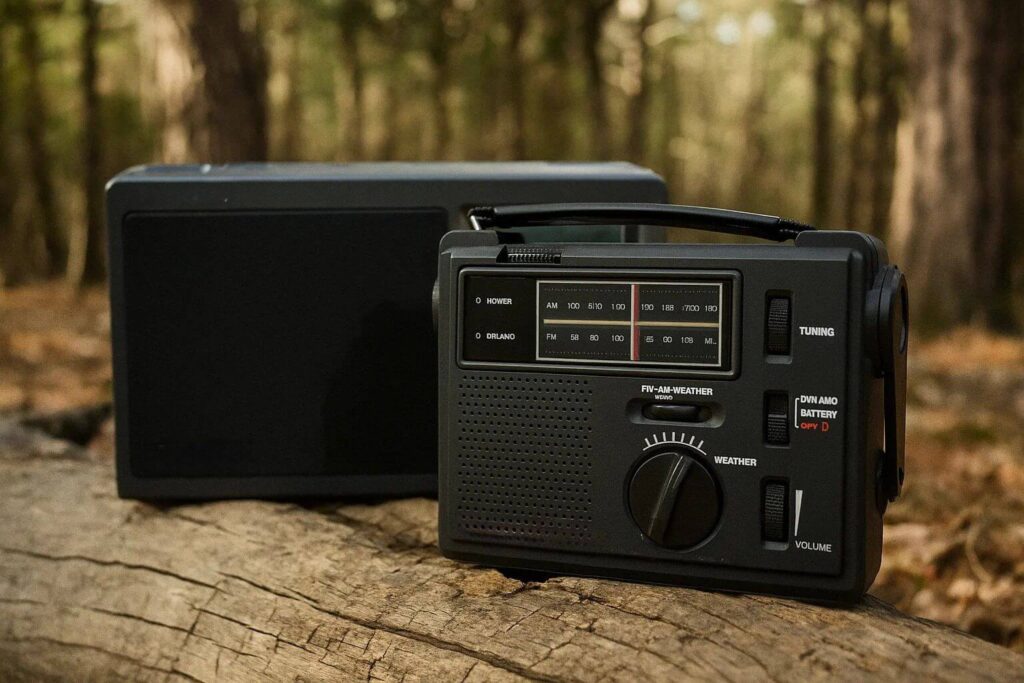
When the grid goes down, information becomes survival. You can have all the gear in the world, but if you don’t know what’s happening around you, you’re flying blind.
A good emergency radio keeps you connected. Look for one that can pick up NOAA weather alerts, AM/FM, and shortwave frequencies. The hand-crank models are especially reliable, even if the batteries are dead, a few turns can power it up long enough to catch the latest updates.
Some models include a small solar panel or USB port for charging, which makes them even more useful during longer outages.
Make it a habit to test your radio every month or so. When things get chaotic, it’s the one voice you can count on to tell you what’s coming next.
6. Multi-Tool

A good multi-tool earns its keep fast. One solid piece of gear can replace half your toolbox and save time when you need it most.
Whether it’s cutting rope, tightening a loose screw, or opening a stubborn can, a quality multi-tool does it all. Look for one with pliers, a sharp blade, screwdrivers, and a saw, simple, durable, and built from stainless steel. Cheap ones bend or jam; a reliable model like a Leatherman or Gerber will last for years.
Keep it somewhere easy to grab, a kitchen drawer, glove box, or go-bag. When something breaks during a blackout, you’ll reach for it without thinking.
7. Reliable Firestarter (Ferro Rod + Tinder Kit)
When the temperature drops and everything’s soaked, matches and cheap lighters stop being reliable. A ferro rod doesn’t care about rain, wind, or cold, it throws sparks hot enough to light almost anything. That’s why it’s a staple in every serious prepper’s kit.
You don’t need fancy tinder. Cotton balls dipped in petroleum jelly, dryer lint, or a bit of birch bark all catch easily. Keep a few in a small waterproof bag, and you’ll have a fire ready in seconds when others are still fumbling with wet matches.
Take a few minutes to practice with your ferro rod before you actually need it. It’s one of those tools that rewards skill, and once you master it, you’ll never go without one again.
8. Camp Stove or Rocket Stove
Nothing lifts your spirits in a blackout like a real, hot meal. It warms you up, calms you down, and reminds you life is still normal, at least for a moment. That’s where a camp stove or rocket stove comes in.
A small propane or butane camp stove is easy to use and perfect for short-term outages. A rocket stove, on the other hand, is built for the long haul. It burns sticks, twigs, or scrap wood and channels heat so efficiently you can boil water with almost nothing.
Whichever setup you have, try it before you need it. Cook a meal, test your fuel, and learn its quirks. The middle of a crisis is the worst time for a first try.
9. Manual Can Opener

It’s probably the most forgotten tool in every emergency kit. People stock up on canned food for blackouts, then realize they can’t open any of it once the power’s out.
Electric can openers are great, until the outlets go dead. A solid manual one doesn’t care if it’s day, night, or week three of an outage. It just works.
Keep two: one in the kitchen and one packed with your emergency supplies. They cost almost nothing, and when you need it, you’ll be thankful you thought ahead.
10. Water Filter (LifeStraw / Sawyer Mini)
Power outages can shut down water systems just as fast as lights. Pumps stop, pipes burst, and contamination sneaks in before anyone notices. Having a reliable filter means you don’t have to gamble on what’s coming out of the tap.
The LifeStraw and Sawyer Mini are small but powerful, each one filters thousands of gallons, removing bacteria and parasites without chemicals or electricity. They weigh almost nothing and fit easily in a go-bag, glove box, or kitchen drawer.
It’s smart to keep one for every family member. Water is the last thing you want to ration, and with a filter like this, you’ll never have to.
11. Cast-Iron Skillet
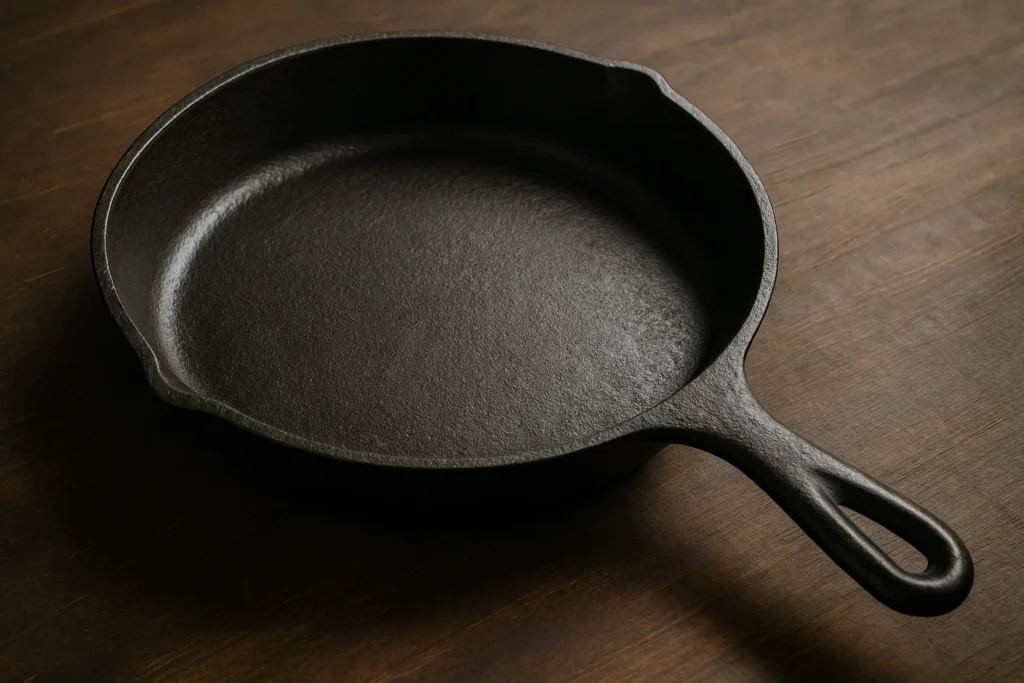
Few tools in the kitchen have stood the test of time like cast iron. It’s heavy, simple, and nearly impossible to break. A single skillet can last generations if you treat it right.
It works on anything, a camp stove, wood fire, propane burner, even the coals of a backyard fire pit. You can fry, bake, or simmer with the same pan, and it’ll still be going strong long after modern cookware warps or cracks.
To keep it in top shape, season it regularly with a thin layer of oil after each use. That coating protects the metal and keeps food from sticking.
Cast iron doesn’t ask for much, but it gives back for decades.
Turn Your Home Into a Survival Base
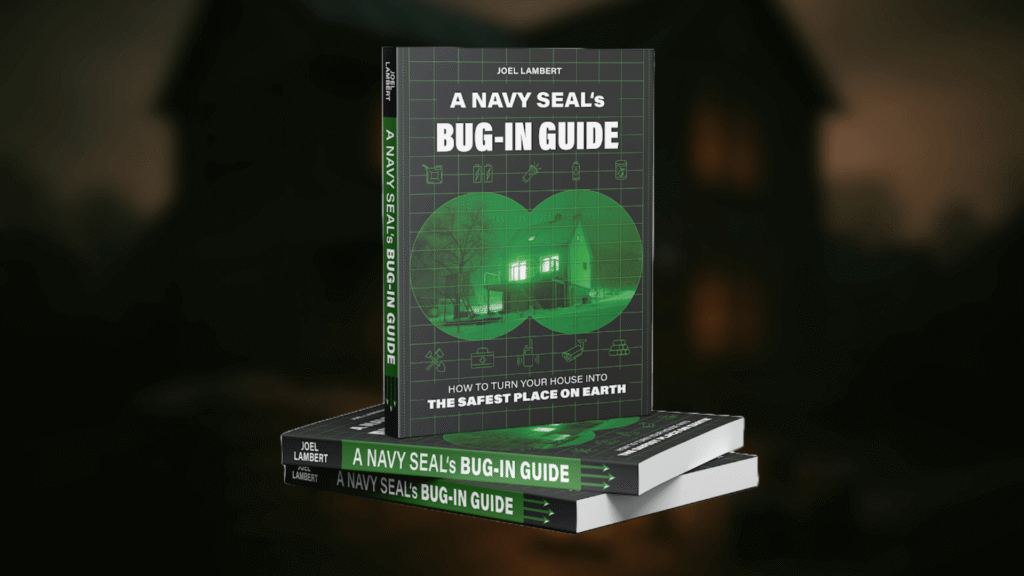
Having the right tools is a solid start, but real preparedness goes beyond gear. It’s about knowing how to use what you have, how to secure your home, manage supplies, and stay calm when the world outside gets chaotic.
That’s exactly what former Navy SEAL Joel Lambert teaches inside A Navy SEAL’s Bug-In Guide. It’s a complete system for turning your home into a safe, self-sufficient base during any crisis, power outages, civil unrest, or worse.
If you’ve already got your tools in order, this guide shows you what to do next. It’s practical, easy to follow, and built from real-world experience.
Review of A Navy SEAL’s Bug-In Guide
True preparedness isn’t collecting gadgets or building bunkers, real independence is the goal. Keep tools that let you function, adapt, and stay calm when the grid goes down.
Every light, filter, and firestarter on this list serves one purpose: to give you control when things stop working for everyone else. When you can cook, stay warm, and communicate without power, you’re already ahead of 90% of people.
Preparedness isn’t fear, it’s freedom. The lights might fail, but your readiness never should.
The Video Every Prepper’s Talking About:







